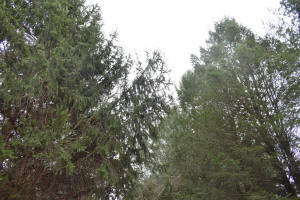|
 Spending
intentional time in nature is an integral part of Forest Therapy, or
forest bathing (Shinrin-Yoku) as it is called in Japan where it
originated. It is a practice that has numerous benefits for mind and
body. The practice began in Japan after the rapid rise in
industrialization there in the 1980s. At the same time, there was a
marked decline in health. As a health-conscious society, researchers
began testing the results of time spent in nature as a balance to
industrialization. Rigorous studies conducted over several years (https://ncbi.nlm.nih.gov/pmc/articles/ Spending
intentional time in nature is an integral part of Forest Therapy, or
forest bathing (Shinrin-Yoku) as it is called in Japan where it
originated. It is a practice that has numerous benefits for mind and
body. The practice began in Japan after the rapid rise in
industrialization there in the 1980s. At the same time, there was a
marked decline in health. As a health-conscious society, researchers
began testing the results of time spent in nature as a balance to
industrialization. Rigorous studies conducted over several years (https://ncbi.nlm.nih.gov/pmc/articles/
PMC5580555/ ) showed forest bathing resulted in lower
blood pressure, but there was more. In these controlled studies,
researchers were surprised to discover not just improved vital signs
in participants, but also reduced anxiety and depression,
improvement in inflammation, and reduced incidents of cancer and
other diseases.
Dr. Cassandra Claman, physician and Certified Nature and Forest
Therapy Guide, related both the history and the health benefits of
Forest Therapy to a small group of participants at Lincoln Park
District on Wednesday morning as part of their Health and Wellness
Seminar series.

She explained that trees, and particularly
evergreens, produce phytoncides, which are volatile organic
compounds (chemicals) with antimicrobial properties. Phytoncides are
the natural, “essential” oils emitted by trees and, when inhaled,
activate natural killer cells, which are white blood cells in the
human body that kill tumors and reduce inflammation (https://www.ncbi.nlm.nih.gov/pmc/
articles/PMC2793341/) . Dr. Claman told the group that Forest
Therapy “is a different approach to being in nature.” It involves
“embodying the various senses and it is meant to establish or
reestablish a connection with nature. It allows nature to
communicate with us and for us to communicate with nature. It helps
us stop looking at nature as the Other. We are nature. We are kin.”

After introducing the concepts of the practice, Dr.
Claman began the forest therapy process, which she called “an
invitation to notice.” She assured participants that there was no
right or wrong way to proceed and began with an opportunity for
everyone to sit quietly and focus on breathing deeply. After a few
moments she invited participants to keep their eyes closed and to
focus on what they were hearing, both distant and near. With eyes
open, she had participants listen again and note any difference in
what they were hearing. One member observed that, with eyes open,
the sound of traffic was more noticeable and she could not as easily
hear the wind rustling the leaves.

After focusing on sound, Dr. Claman invited the group
to wander among the trees and to notice texture and touch. When she
gathered the group back together, each member had an opportunity to
share one textural thing she had noticed, such as the tree bark. [to top of second
column] |

Then Dr. Claman invited participants to another
wander through the trees, this time noticing motion. After some
minutes of wandering, the group reconvened to share one thing each
had noticed, such as the dry leaves still clinging to branches and a
baby evergreen being buffeted by the wind.

The final wander was to notice tiny things. When the
group regathered, each member shared a tiny thing they had noticed
in nature, such as a petite wild strawberry leaf and twin acorns on
a bed of bright green moss.


The experience concluded with a tea ceremony. Dr.
Claman poured everyone a steaming mug of lavender and chamomile tea,
including one to offer to the trees. Dr. Claman encouraged
participants to consider finding a place to continue Forest Therapy,
someplace nearby and easily accessible. One member thought of a
perfect tree in her yard to host a bench and another already had a
bench in her garden. Dr. Claman stated that forest therapy should be
practiced once a week to maintain therapeutic benefits. When she was
training, she was required to sit in nature for 30 minutes three
times per week. She said at first she did not know how she would sit
still for that long, but once she started the practice, it became
her most cherished time.
Dr. Claman works as a coach for other physicians and for individuals
who are interested in implementing Forest Therapy into their
clinical and health practices or in using the techniques to promote
personal wellness. She is certified through the Association of
Nature and Forest Therapy. More information is available at her
website
www.embodyingnature
coaching.com.
Want to try Forest Therapy? The next opportunity to experience
Forest Therapy in Lincoln is at an Earth Day special event on
Saturday, April 20 (weather permitting). Dr. Claman will lead a
session of Earth Day Forest Therapy at Memorial Park in Lincoln from
10 a.m. to 11:30 a.m. for a donation to the Lincoln Park District
Foundation.
Registration is required as spaces are limited. Contact the Lincoln
Park District at (217) 732-8770 for more information.
[Stephanie Hall]
 |